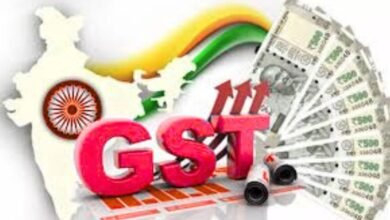Indian Stock Market Slips to Multi-Month Lows Despite Record DII Buying; Global Indices Hit Fresh Highs
While Wall Street, Nikkei, and Asian peers rally to record levels, Nifty drops 3.6% in six weeks as FPI outflows, tariffs, and tepid earnings weigh on sentiment.

Indian stock market declines 3.6% in six weeks despite record ₹4.64 lakh crore DII inflows in 2025. Global indices hit highs; FPIs sell amid Trump tariffs, weak earnings outlook.
Indian Stock Market Falls Despite Heavy DII Buying, Global Peers Rally to Record Highs
The Indian stock market has struggled since the beginning of July, with Nifty slipping 3.6% over the last six weeks to hit a three-month low, even as global indices have surged to fresh peaks.
In contrast, markets in the US, Japan, China, Hong Kong, and South Korea have posted robust gains during the same period. The divergence has puzzled investors, given the record-breaking domestic institutional investor (DII) buying spree in 2025.
Global Rally vs. India’s Decline
While India’s Nifty has been under pressure, other major indices have performed strongly:
- Shanghai Composite (China): +7% since July, highest since Nov 2024
- Hang Seng (Hong Kong): +6%, highest since Oct 2021
- Kospi (South Korea): +5%, near record highs
- Nikkei 225 (Japan): +8%, record 43,418
- Dow Jones Industrial Average (US): +8.2%, record high
- S&P 500 (US): +4%, record high
- Nasdaq (US): +5.1%, all-time peak
This stark contrast reflects domestic-specific headwinds holding back Indian equities.
Why Is India Lagging?
Despite strong local buying, three key factors are weighing on sentiment:
1. Geopolitical Tensions
US President Donald Trump’s harsh tariffs on Indian exports and deteriorating US–India trade relations have dampened market confidence.
2. Weak Earnings Outlook
Q1 FY26 earnings growth has been tepid, with analysts projecting only 8–10% FY26 EPS growth, below earlier market expectations.
3. Valuation Concerns
Elevated valuations across sectors have made investors cautious, particularly in mid-cap and small-cap segments.
FPI Outflows vs. DII Inflows
So far in August 2025:
- FPIs sold: ₹18,620 crore
- DIIs bought: ₹46,272 crore
Year-to-date 2025:
- DII inflows: ₹4.64 lakh crore (record high)
- FPI outflows: ₹1.65 lakh crore
DIIs have been net buyers every month of 2025, with the largest inflows in January (₹86,591 crore) and June (₹72,673 crore).
Sectoral Strategy for Long-Term Investors
According to Dr. V.K. Vijayakumar, Chief Investment Strategist at Geojit Financial Services, the current dip is an opportunity for asset allocation. He recommends:
- Banking (large-cap, well-capitalised players)
- Telecom (high ARPU growth)
- Capital Goods (government infrastructure push)
- Aviation (demand recovery, lower fuel costs)
- Select Mid-cap IT (digital transformation growth)
Possible Triggers for Recovery
Market sentiment could turn quickly if:
- Trump–Putin talks result in easing geopolitical tensions
- Earnings surprises in Q2 FY26 boost forward guidance
- Crude oil prices remain stable, aiding OMCs and manufacturing
- FPI flows turn positive, complementing DII inflows
Technical Picture
- Nifty Support: 24,200
- Nifty Resistance: 24,800
- Short-term Trend: Weak but oversold
- Medium-term View: Accumulation zone for quality large caps





